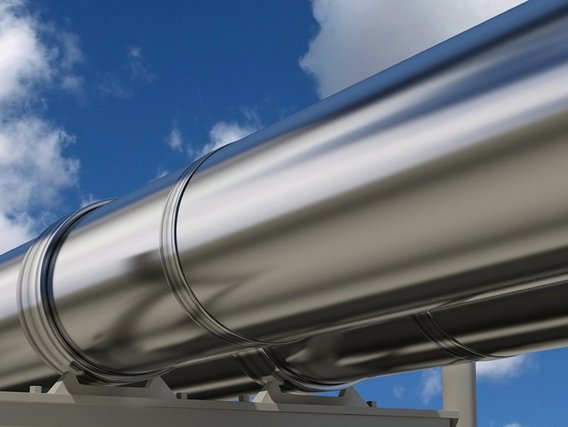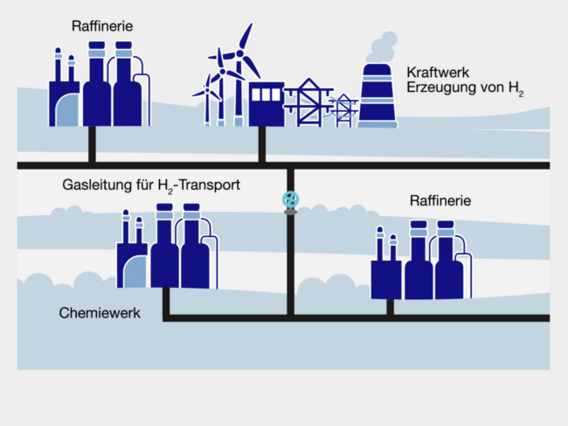
Using hydrogen pipelines to create a national hydrogen network
The planned expansion of production capacities in the field of green hydrogen makes solutions for the storage and transport of hydrogen (H2) absolutely essential. In this respect, the gas infrastructure has the greatest potential in Germany. In addition to the construction of a dedicated hydrogen network consisting of hydrogen pipelines, the utilisation and rededication of the existing gas network is the subject of intensive research work. This involves both the suitability of materials and the development of suitable standards and safety regulations as well as national and international regulations. A phase is foreseeable in which the existing gas network can also make a gradually increasing contribution to decarbonisation and the successful coupling of the industrial, mobility and heating sectors.
Benefit from us as your strong partner for the energy transition in the gas grid - both in the development of new grids and with regard to the testing and utilisation of existing systems. With modern analysis and measurement methods as well as competent experts, we are at your side to carry out your project safely and successfully and, if possible, to let you benefit from subsidies. With our expertise, know-how and many years of experience, we are an independent partner for safety and hazard prevention by being able to test, inspect and certify various aspects of hydrogen technology.
